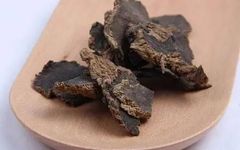This category of Chinese herbs functions to clear internal heat, relieve heat toxins, cool the blood, and drain heat, primarily used for heat constitution and internal heat syndromes.
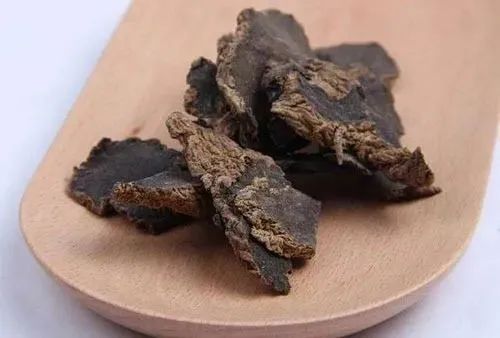
●Xuan Shen (Scrophularia Root)●Xuan Shen is the root of the Scrophulariaceae plant Scrophularia ningpoensis and S. buergeriana, containing iridoid glycosides, phenylethanoid glycosides, and volatile oils. Pharmacological tests have shown that Xuan Shen’s water and alcohol extracts, as well as decoctions, have blood pressure-lowering effects; it also has vasodilatory and cardiotonic effects. Various preparations of Xuan Shen have antipyretic and anticonvulsant effects.Traditional Chinese Medicine (TCM) considers it cold in nature, sweet and bitter in taste, with functions to nourish yin, lower fire, cool the blood, and detoxify, suitable for symptoms such as heat disease with thirst, rashes, bone steaming fever, insomnia, spontaneous sweating, night sweats, injury to fluids with constipation, and sore throat.Dosage: 6-12 grams; avoid use in cases of loose stools and excessive phlegm-dampness. 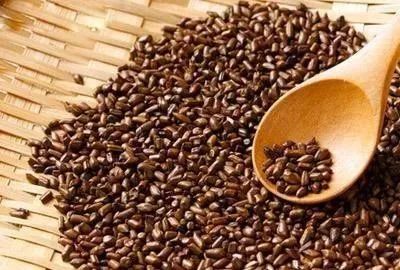 ●Jue Ming Zi (Cassia Seed)●Jue Ming Zi is the seed of the leguminous plant Cassia obtusifolia or Cassia tora, containing anthraquinones and flavonoids. Pharmacological tests have shown that Jue Ming Zi has blood pressure-lowering and serum cholesterol-lowering effects; it also has antibacterial properties and promotes soft stools.TCM considers it slightly cold in nature, sweet and bitter in taste, with functions to clear the liver, brighten the eyes, promote urination, and relieve constipation, suitable for symptoms such as red, painful eyes due to liver heat or wind-heat in the liver meridian, as well as effective for treating hypertension, hepatitis, cirrhosis with ascites, and habitual constipation. Dosage: 3-9 grams, crushed and decocted.
●Jue Ming Zi (Cassia Seed)●Jue Ming Zi is the seed of the leguminous plant Cassia obtusifolia or Cassia tora, containing anthraquinones and flavonoids. Pharmacological tests have shown that Jue Ming Zi has blood pressure-lowering and serum cholesterol-lowering effects; it also has antibacterial properties and promotes soft stools.TCM considers it slightly cold in nature, sweet and bitter in taste, with functions to clear the liver, brighten the eyes, promote urination, and relieve constipation, suitable for symptoms such as red, painful eyes due to liver heat or wind-heat in the liver meridian, as well as effective for treating hypertension, hepatitis, cirrhosis with ascites, and habitual constipation. Dosage: 3-9 grams, crushed and decocted.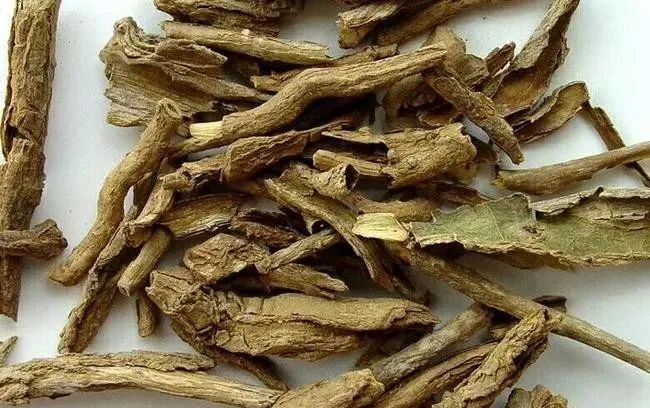 ●Di Gu Pi (Lycium Root Bark)●Di Gu Pi is the root bark of the Solanaceae plant Lycium barbarum, containing cinnamic acid, various phenolic compounds, betaine, and linoleic acid. Di Gu Pi has significant antipyretic effects, and its decoction can lower blood sugar, reduce serum cholesterol, and has anti-fatty liver effects; its infusion has shown significant blood pressure-lowering effects in animals.TCM considers it cold in nature, sweet and bland in taste, with functions to cool the blood, reduce steaming, and clear lung heat, suitable for symptoms such as deficiency heat with night sweats, cough and asthma due to lung heat, and blood heat leading to hemoptysis, epistaxis, abscesses, and tuberculosis. Dosage: generally 3-9 grams.
●Di Gu Pi (Lycium Root Bark)●Di Gu Pi is the root bark of the Solanaceae plant Lycium barbarum, containing cinnamic acid, various phenolic compounds, betaine, and linoleic acid. Di Gu Pi has significant antipyretic effects, and its decoction can lower blood sugar, reduce serum cholesterol, and has anti-fatty liver effects; its infusion has shown significant blood pressure-lowering effects in animals.TCM considers it cold in nature, sweet and bland in taste, with functions to cool the blood, reduce steaming, and clear lung heat, suitable for symptoms such as deficiency heat with night sweats, cough and asthma due to lung heat, and blood heat leading to hemoptysis, epistaxis, abscesses, and tuberculosis. Dosage: generally 3-9 grams.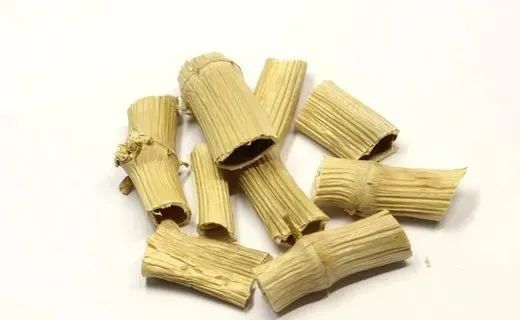 ●Lu Gen (Reed Rhizome)●Lu Gen is the underground stem of the Poaceae plant Phragmites australis, containing coixol and asparagine. TCM considers it cold in nature, sweet in taste, with functions to clear heat, generate fluids, relieve irritability, stop vomiting, and promote urination, suitable for heat diseases injuring fluids, irritability and thirst, gastric heat vomiting, choking sensation, and for treating lung heat cough and lung abscess.Dosage: generally 9-30 grams for dried; 15-40 grams for fresh.
●Lu Gen (Reed Rhizome)●Lu Gen is the underground stem of the Poaceae plant Phragmites australis, containing coixol and asparagine. TCM considers it cold in nature, sweet in taste, with functions to clear heat, generate fluids, relieve irritability, stop vomiting, and promote urination, suitable for heat diseases injuring fluids, irritability and thirst, gastric heat vomiting, choking sensation, and for treating lung heat cough and lung abscess.Dosage: generally 9-30 grams for dried; 15-40 grams for fresh. 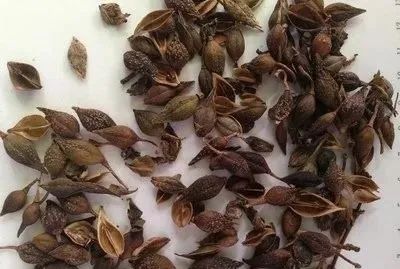 ●Lian Qiao (Forsythia Fruit)●Lian Qiao is the fruit of the Oleaceae plant Forsythia suspensa, containing volatile oils, forsythoside, flavonoids, and alkaloids. Pharmacological tests indicate that Lian Qiao has broad-spectrum antibacterial effects, with forsythoside being a major antibacterial component; it also has anti-inflammatory, antiemetic, diuretic, and cardiotonic effects; the flavonoids can enhance capillary density, thus having hemostatic effects for bleeding due to capillary rupture and subcutaneous hemorrhage.TCM considers it slightly cold in nature, bitter in taste, with functions to clear heat, detoxify, disperse lumps, and reduce swelling, suitable for warm heat, erysipelas, rashes, abscesses, and allergic purpura.Dosage: generally 6-9 grams.
●Lian Qiao (Forsythia Fruit)●Lian Qiao is the fruit of the Oleaceae plant Forsythia suspensa, containing volatile oils, forsythoside, flavonoids, and alkaloids. Pharmacological tests indicate that Lian Qiao has broad-spectrum antibacterial effects, with forsythoside being a major antibacterial component; it also has anti-inflammatory, antiemetic, diuretic, and cardiotonic effects; the flavonoids can enhance capillary density, thus having hemostatic effects for bleeding due to capillary rupture and subcutaneous hemorrhage.TCM considers it slightly cold in nature, bitter in taste, with functions to clear heat, detoxify, disperse lumps, and reduce swelling, suitable for warm heat, erysipelas, rashes, abscesses, and allergic purpura.Dosage: generally 6-9 grams. 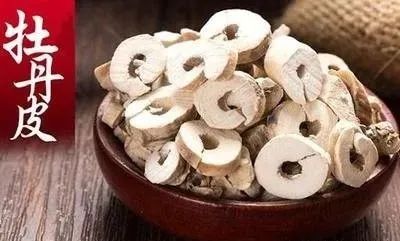 ●Mu Dan Pi (Peony Root Bark)●Mu Dan Pi is the root bark of the Ranunculaceae plant Paeonia lactiflora, containing paeonol, paeoniflorin, volatile oils, and phytosterols. Pharmacological tests have shown that Mu Dan Pi has blood pressure-lowering effects; it has analgesic, sedative, anti-inflammatory, and antipyretic effects; it also has strong inhibitory effects against various pathogenic bacteria.TCM considers it cool in nature, bitter and pungent in taste, with functions to clear heat, cool the blood, harmonize the blood, and clear stasis, suitable for symptoms such as heat in the blood level, rashes, severe pain, hemoptysis, and abscesses. Dosage: 5-9 grams, but avoid use in cases of spleen and stomach deficiency with diarrhea.
●Mu Dan Pi (Peony Root Bark)●Mu Dan Pi is the root bark of the Ranunculaceae plant Paeonia lactiflora, containing paeonol, paeoniflorin, volatile oils, and phytosterols. Pharmacological tests have shown that Mu Dan Pi has blood pressure-lowering effects; it has analgesic, sedative, anti-inflammatory, and antipyretic effects; it also has strong inhibitory effects against various pathogenic bacteria.TCM considers it cool in nature, bitter and pungent in taste, with functions to clear heat, cool the blood, harmonize the blood, and clear stasis, suitable for symptoms such as heat in the blood level, rashes, severe pain, hemoptysis, and abscesses. Dosage: 5-9 grams, but avoid use in cases of spleen and stomach deficiency with diarrhea.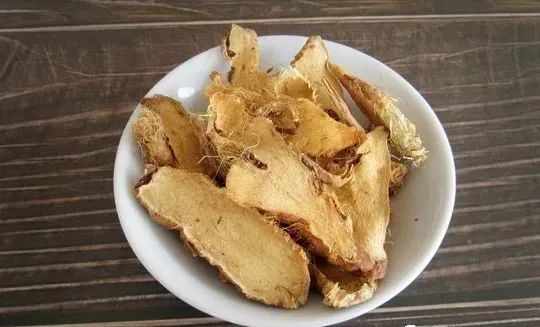 ●Zhi Mu (Anemarrhena Rhizome)●Zhi Mu is the rhizome of the Liliaceae plant Anemarrhena asphodeloides, containing various saponins and flavonoids. Tests have shown that Zhi Mu has significant antipyretic effects, with notable efficacy against epidemic hemorrhagic fever, epidemic type B encephalitis, and tidal fever in tuberculosis.TCM considers it cold in nature, sweet and bitter in taste, with functions to clear heat, drain fire, nourish yin, and moisten dryness, suitable for symptoms such as lung heat cough or yin deficiency cough, irritability and thirst, bone steaming fever, difficulty urinating, and constipation. Dosage: generally 6-9 grams, but avoid use in cases of kidney yang deficiency, weak pulse, and loose stools.
●Zhi Mu (Anemarrhena Rhizome)●Zhi Mu is the rhizome of the Liliaceae plant Anemarrhena asphodeloides, containing various saponins and flavonoids. Tests have shown that Zhi Mu has significant antipyretic effects, with notable efficacy against epidemic hemorrhagic fever, epidemic type B encephalitis, and tidal fever in tuberculosis.TCM considers it cold in nature, sweet and bitter in taste, with functions to clear heat, drain fire, nourish yin, and moisten dryness, suitable for symptoms such as lung heat cough or yin deficiency cough, irritability and thirst, bone steaming fever, difficulty urinating, and constipation. Dosage: generally 6-9 grams, but avoid use in cases of kidney yang deficiency, weak pulse, and loose stools.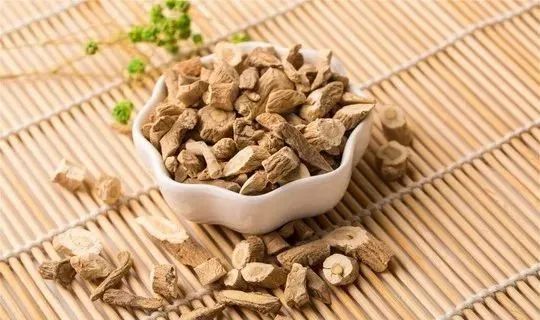 ●Ban Lan Gen (Isatis Root)●Ban Lan Gen is the root of the Brassicaceae plant Isatis indigotica, containing indigo and various other compounds. Ban Lan Gen has significant antiviral effects. It inhibits various pathogenic bacteria and has effects against Leptospira.Clinically, Ban Lan Gen decoction is used orally or by intramuscular injection to treat epidemic type B encephalitis with significant efficacy; it is also effective for acute and chronic hepatitis, alleviating or resolving symptoms and improving liver function; Ban Lan Gen is used to treat viral skin diseases such as herpes simplex, shingles, pityriasis rosea, and flat warts with varying degrees of effectiveness.TCM considers it cold in nature, bitter in taste, with functions to clear heat, detoxify, cool the blood, and benefit the throat, suitable for influenza encephalitis, type B encephalitis, pneumonia, erysipelas, heat toxin rashes, fire eyes, and herpes. Dosage: generally 5-9 grams; avoid use in cases of spleen and stomach deficiency with cold.
●Ban Lan Gen (Isatis Root)●Ban Lan Gen is the root of the Brassicaceae plant Isatis indigotica, containing indigo and various other compounds. Ban Lan Gen has significant antiviral effects. It inhibits various pathogenic bacteria and has effects against Leptospira.Clinically, Ban Lan Gen decoction is used orally or by intramuscular injection to treat epidemic type B encephalitis with significant efficacy; it is also effective for acute and chronic hepatitis, alleviating or resolving symptoms and improving liver function; Ban Lan Gen is used to treat viral skin diseases such as herpes simplex, shingles, pityriasis rosea, and flat warts with varying degrees of effectiveness.TCM considers it cold in nature, bitter in taste, with functions to clear heat, detoxify, cool the blood, and benefit the throat, suitable for influenza encephalitis, type B encephalitis, pneumonia, erysipelas, heat toxin rashes, fire eyes, and herpes. Dosage: generally 5-9 grams; avoid use in cases of spleen and stomach deficiency with cold.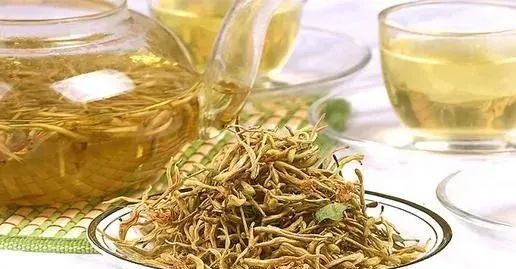 ●Jin Yin Hua (Honeysuckle Flower)●Jin Yin Hua is the flower bud of the Caprifoliaceae plant Lonicera japonica, containing chlorogenic acid, inositol, and flavonoids. Pharmacological tests have shown that Jin Yin Hua has anti-inflammatory and antipyretic effects, inhibiting influenza viruses and various pathogenic bacteria, reflecting its heat-clearing and detoxifying properties.TCM considers it cold in nature, sweet in taste, with functions to clear heat and detoxify, suitable for warm disease with fever, heat toxin dysentery, sores, abscesses, and boils. Dosage: generally 6-12 grams; avoid use in cases of deficiency-cold diarrhea and sores with clear pus without heat toxin.
●Jin Yin Hua (Honeysuckle Flower)●Jin Yin Hua is the flower bud of the Caprifoliaceae plant Lonicera japonica, containing chlorogenic acid, inositol, and flavonoids. Pharmacological tests have shown that Jin Yin Hua has anti-inflammatory and antipyretic effects, inhibiting influenza viruses and various pathogenic bacteria, reflecting its heat-clearing and detoxifying properties.TCM considers it cold in nature, sweet in taste, with functions to clear heat and detoxify, suitable for warm disease with fever, heat toxin dysentery, sores, abscesses, and boils. Dosage: generally 6-12 grams; avoid use in cases of deficiency-cold diarrhea and sores with clear pus without heat toxin. 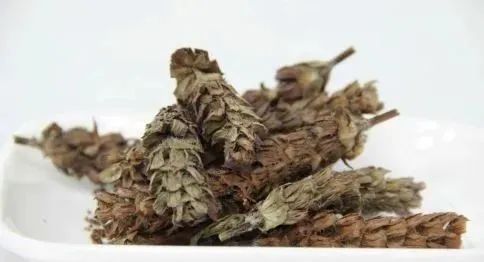 ●Xia Ku Cao (Selfheal Herb)●Xia Ku Cao is the flower or whole herb of the Lamiaceae plant Prunella vulgaris, containing triterpenoid saponins and their aglycones, volatile oils, and vitamins. Pharmacological studies have shown that the whole herb of Xia Ku Cao has blood pressure-lowering effects; its decoction has varying degrees of inhibitory effects against common skin fungi and various pathogenic bacteria.TCM considers it cold in nature, bitter and pungent in taste, with functions to clear liver fire, disperse stagnation, and lower blood pressure, suitable for symptoms such as red, swollen, painful eyes due to liver fire, eye pain, photophobia, headache, and dizziness; it is also used for scrofula and goiter due to phlegm-fire stagnation. Dosage: generally around 9 grams.
●Xia Ku Cao (Selfheal Herb)●Xia Ku Cao is the flower or whole herb of the Lamiaceae plant Prunella vulgaris, containing triterpenoid saponins and their aglycones, volatile oils, and vitamins. Pharmacological studies have shown that the whole herb of Xia Ku Cao has blood pressure-lowering effects; its decoction has varying degrees of inhibitory effects against common skin fungi and various pathogenic bacteria.TCM considers it cold in nature, bitter and pungent in taste, with functions to clear liver fire, disperse stagnation, and lower blood pressure, suitable for symptoms such as red, swollen, painful eyes due to liver fire, eye pain, photophobia, headache, and dizziness; it is also used for scrofula and goiter due to phlegm-fire stagnation. Dosage: generally around 9 grams.  ●Zhi Zi (Gardenia Fruit)●Zhi Zi is the fruit of the Rubiaceae plant Gardenia jasminoides, containing various bitter glycosides, as well as mannitol and ursolic acid. Zhi Zi has choleretic effects, increasing bile secretion; it also has cooling, sedative, analgesic, and anticonvulsant effects; it has antimicrobial effects, inhibiting various pathogenic bacteria and skin fungi.TCM considers it cold in nature, bitter in taste, with functions to drain fire, relieve irritability, clear heat, promote dampness, cool the blood, and detoxify, suitable for symptoms such as heat disease with irritability and insomnia, jaundice, red eyes, epistaxis, and heat toxin sores. Dosage: 3-9 grams.
●Zhi Zi (Gardenia Fruit)●Zhi Zi is the fruit of the Rubiaceae plant Gardenia jasminoides, containing various bitter glycosides, as well as mannitol and ursolic acid. Zhi Zi has choleretic effects, increasing bile secretion; it also has cooling, sedative, analgesic, and anticonvulsant effects; it has antimicrobial effects, inhibiting various pathogenic bacteria and skin fungi.TCM considers it cold in nature, bitter in taste, with functions to drain fire, relieve irritability, clear heat, promote dampness, cool the blood, and detoxify, suitable for symptoms such as heat disease with irritability and insomnia, jaundice, red eyes, epistaxis, and heat toxin sores. Dosage: 3-9 grams.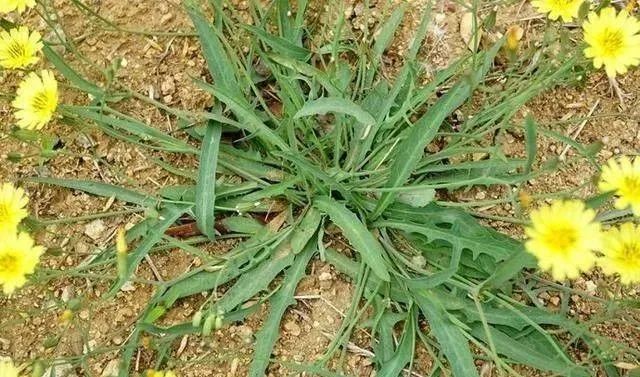 ●Pu Gong Ying (Dandelion)●Pu Gong Ying is the whole herb of the Asteraceae plant Taraxacum mongolicum, containing taraxasterol, choline, inulin, and fruit acids. Its decoction has antimicrobial effects; it also has liver-protective, choleretic, and immune-enhancing effects.TCM considers it cold in nature, sweet and bitter in taste, with functions to clear heat, detoxify, reduce swelling, and disperse lumps, suitable for acute mastitis, lymphadenitis, parotitis, gastritis, hepatitis, cholecystitis, urinary tract infections, etc. Dosage: 9-15 grams, crushed and applied externally, can be used for breast abscesses, rashes, and boils.
●Pu Gong Ying (Dandelion)●Pu Gong Ying is the whole herb of the Asteraceae plant Taraxacum mongolicum, containing taraxasterol, choline, inulin, and fruit acids. Its decoction has antimicrobial effects; it also has liver-protective, choleretic, and immune-enhancing effects.TCM considers it cold in nature, sweet and bitter in taste, with functions to clear heat, detoxify, reduce swelling, and disperse lumps, suitable for acute mastitis, lymphadenitis, parotitis, gastritis, hepatitis, cholecystitis, urinary tract infections, etc. Dosage: 9-15 grams, crushed and applied externally, can be used for breast abscesses, rashes, and boils.
Note: Everyone’s body condition is different; the formulas provided in this article should be adjusted according to individual preferences, and it is recommended to seek guidance from a professional doctor.
If you like it, feel free to share it with your friends!
Don’t forget to give athumbs up!

